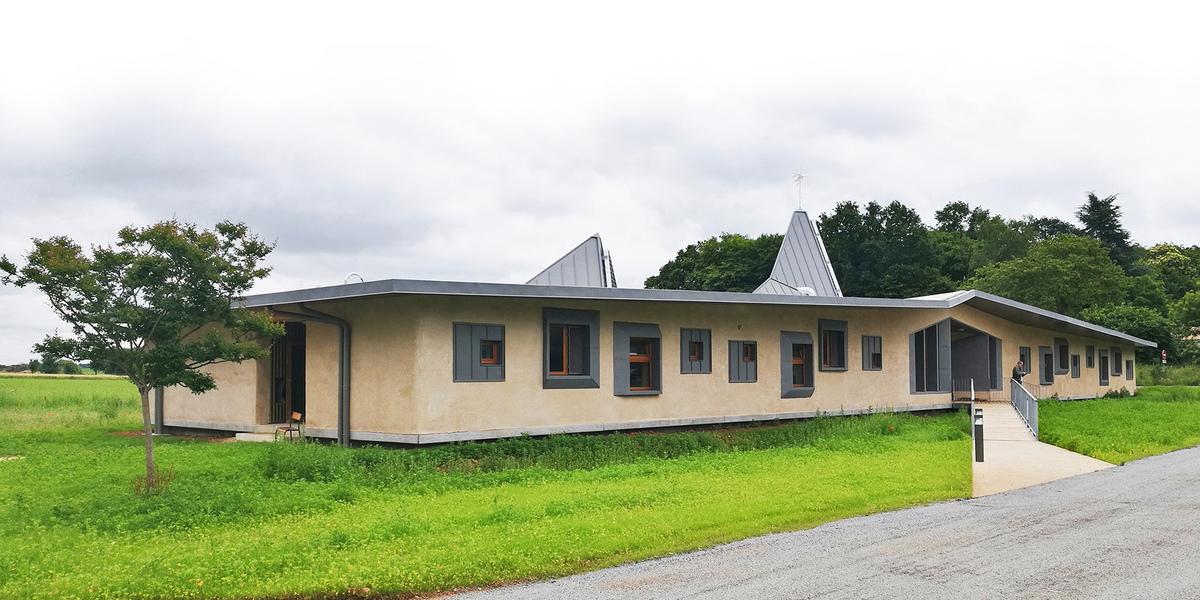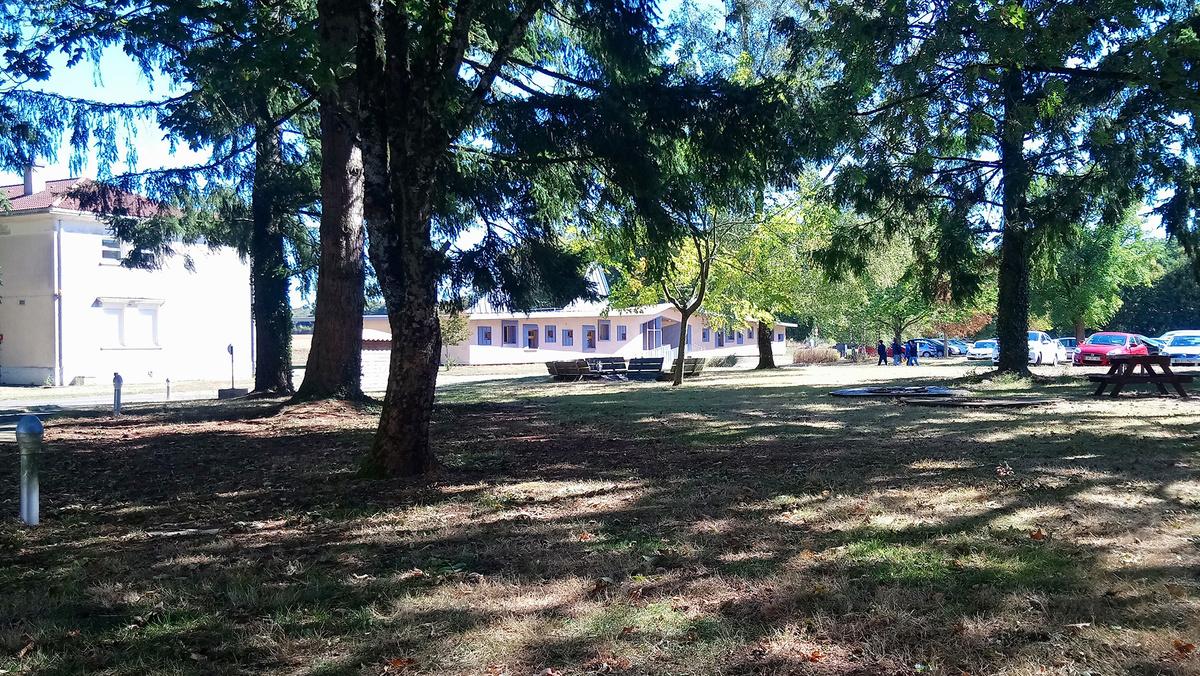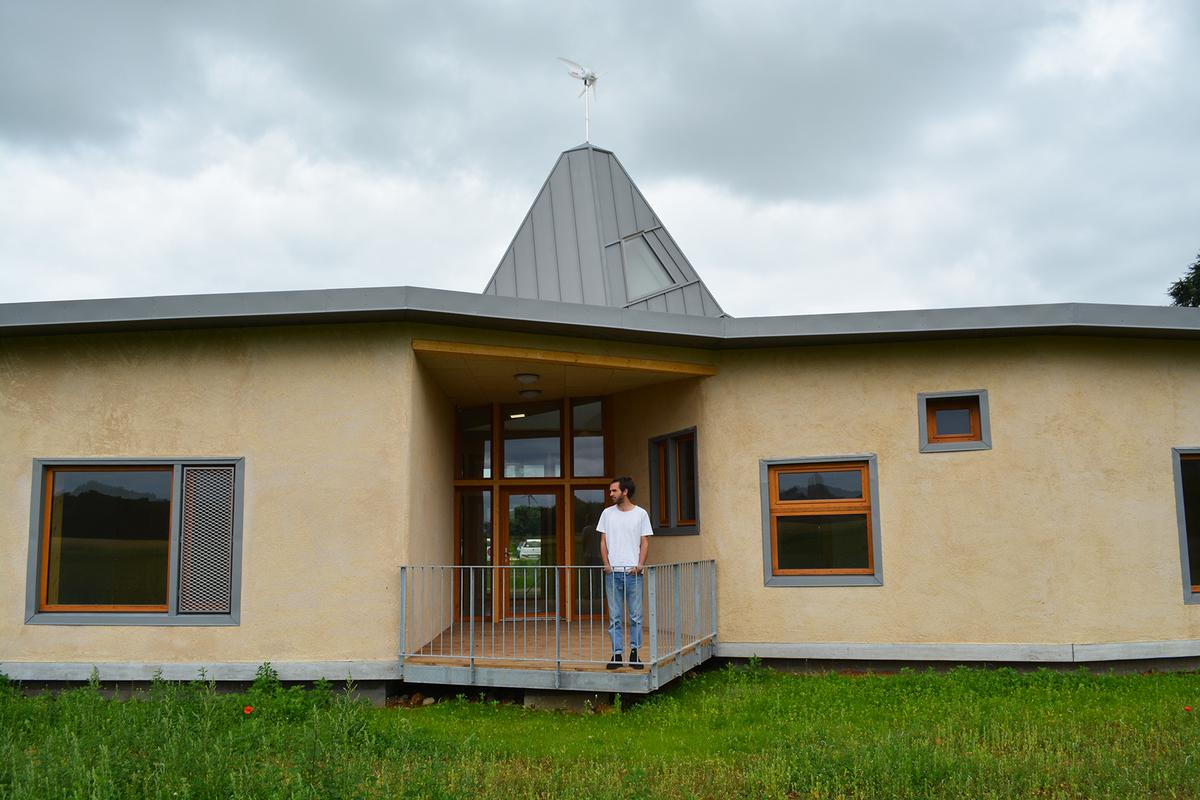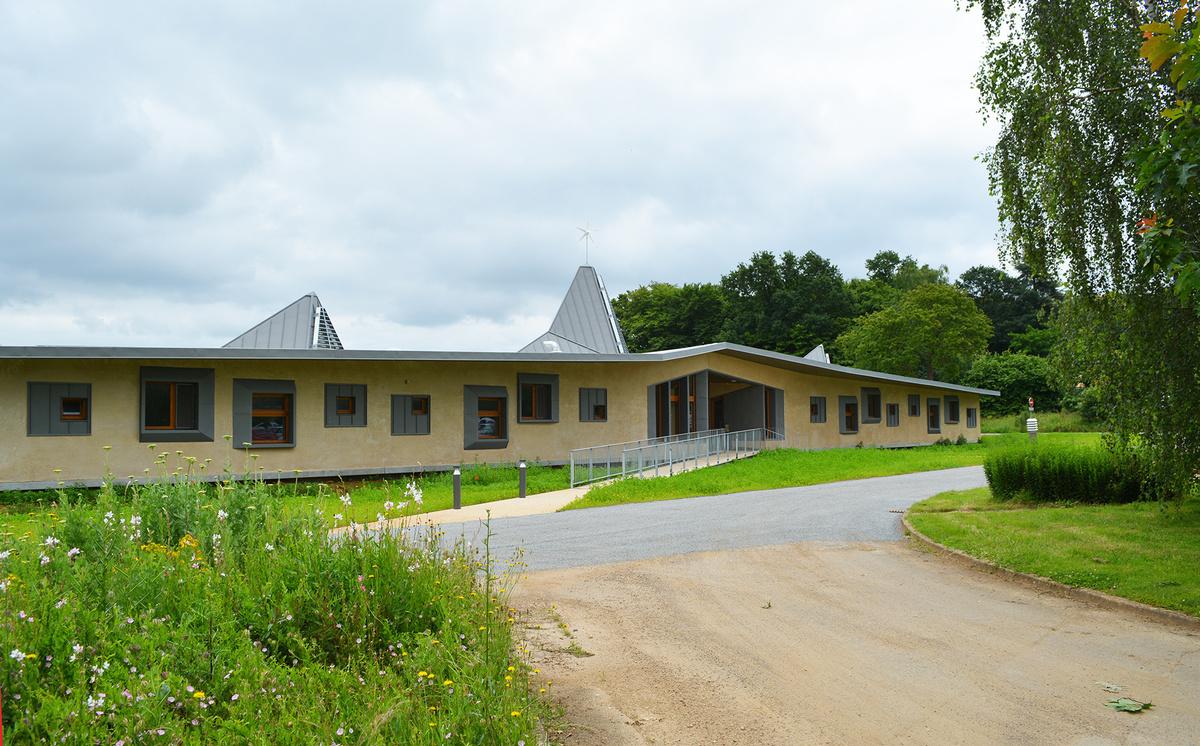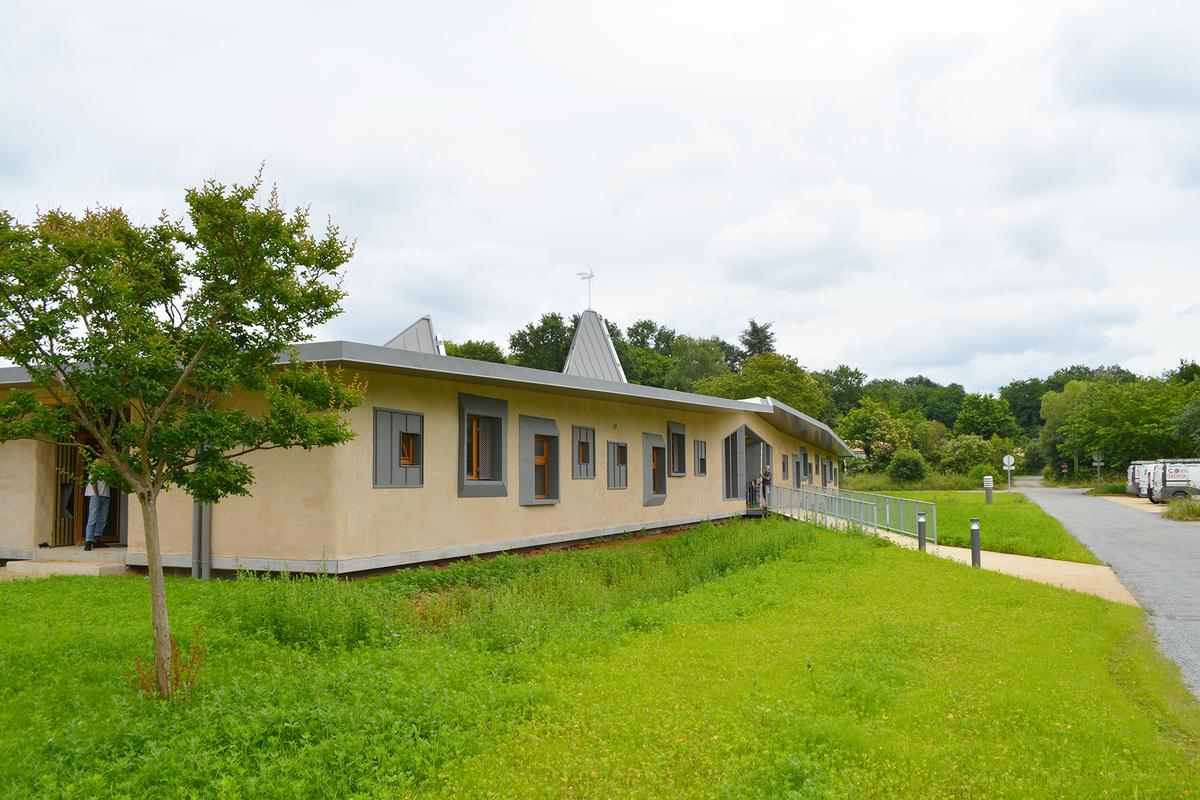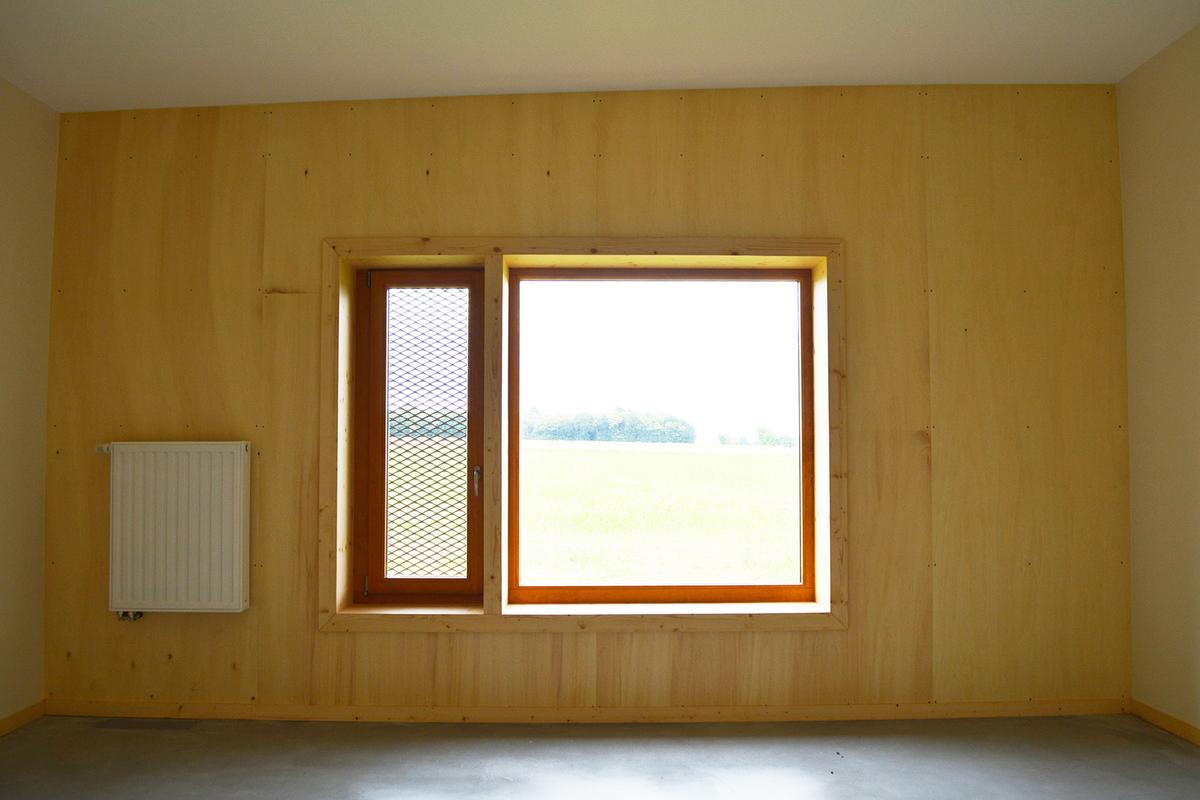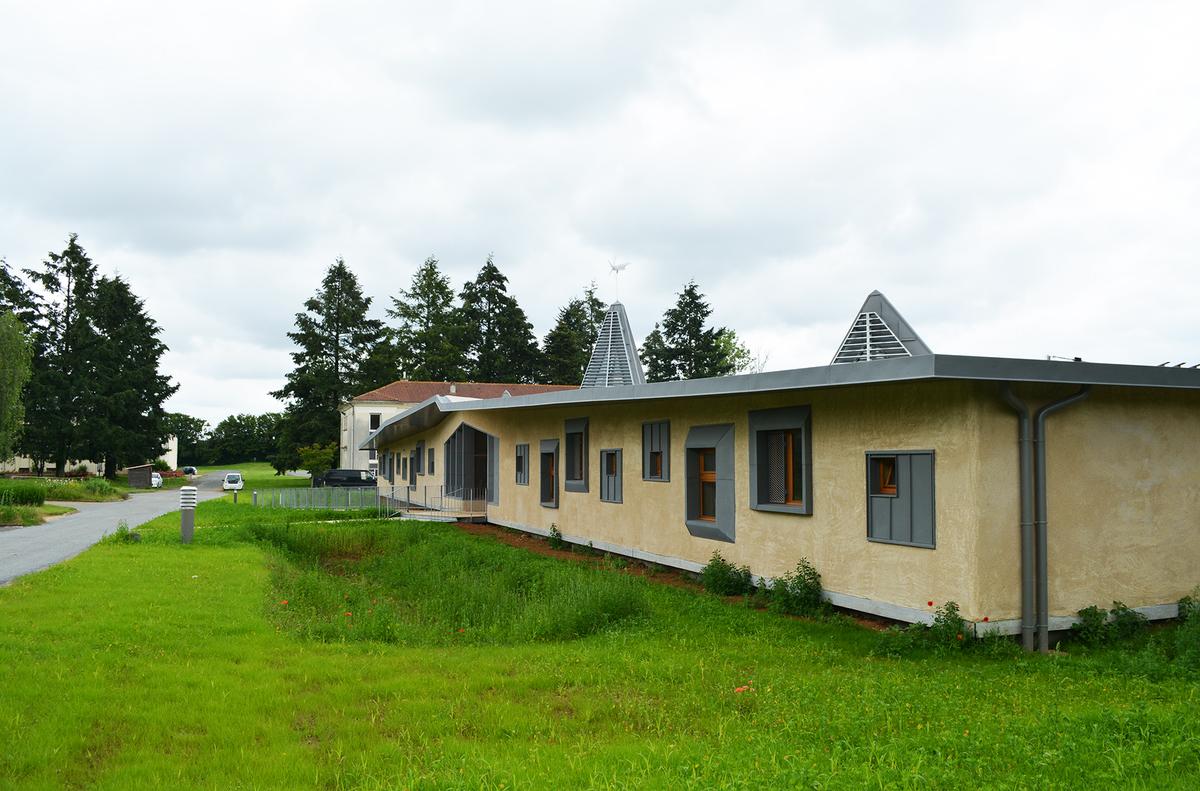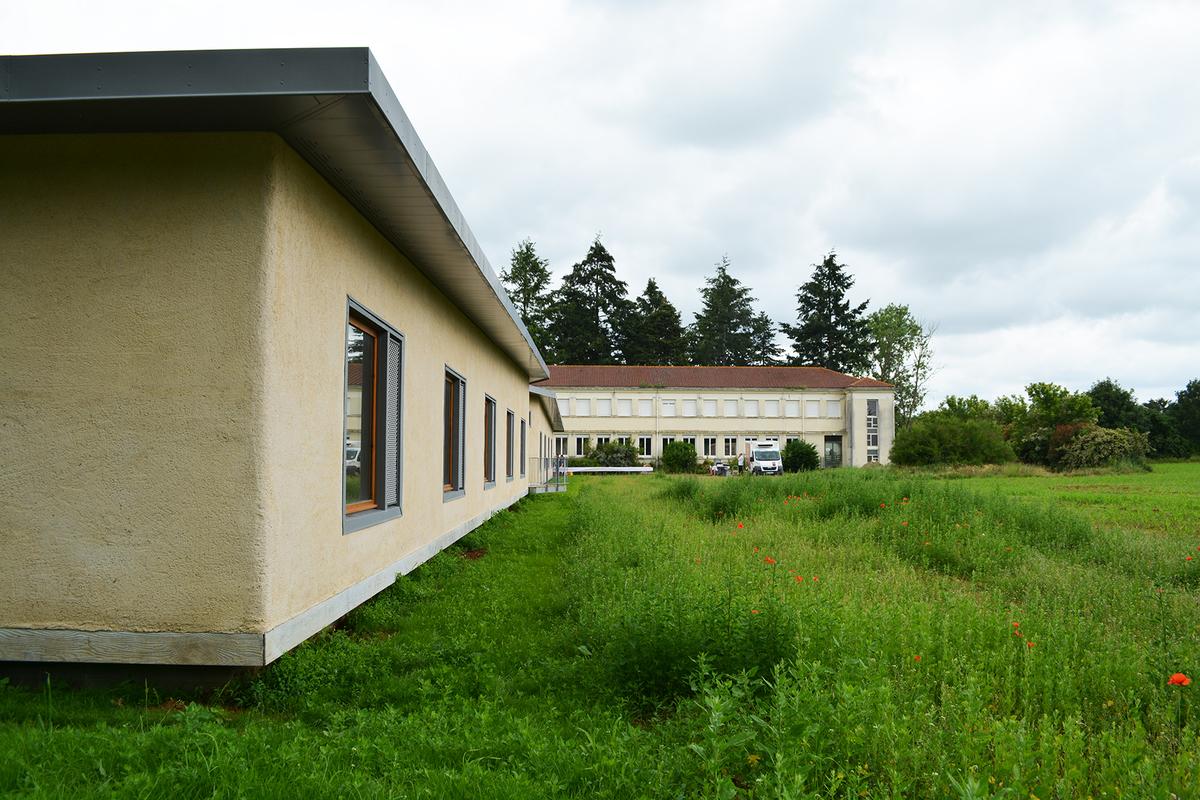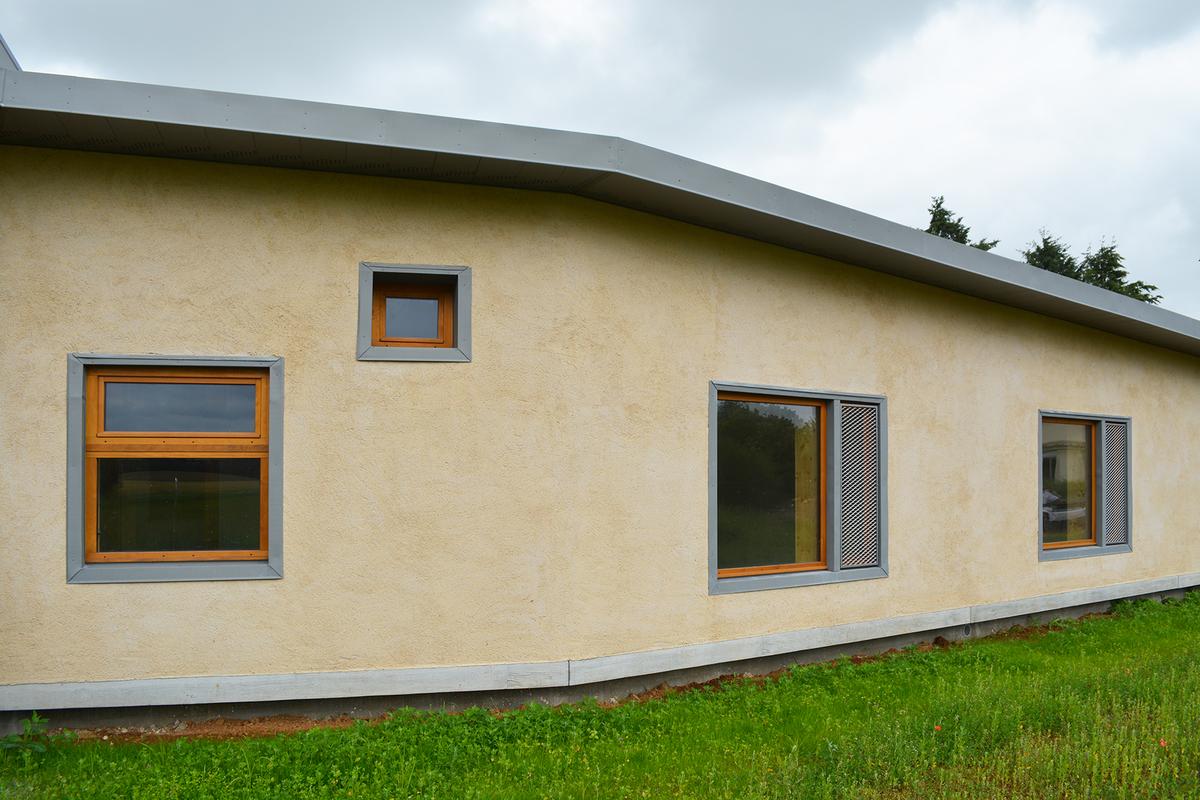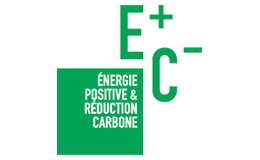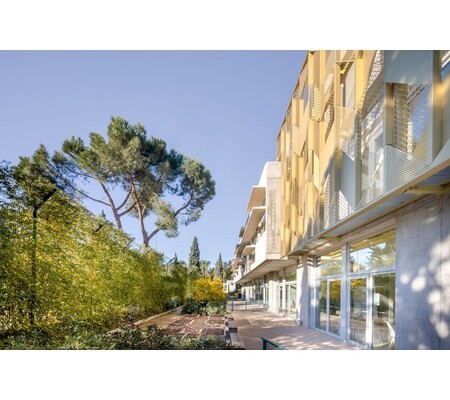Green Wheat
Last modified by the author on 17/06/2019 - 15:50
New Construction
- Building Type : Student residence
- Construction Year : 2018
- Delivery year : 2018
- Address 1 - street : Lycée Xavier Bernard 86480 ROUILLé, France
- Climate zone : [Cfb] Marine Mild Winter, warm summer, no dry season.
- Net Floor Area : 695 m2
- Construction/refurbishment cost : 1 120 000 €
- Number of Dwelling : 13 Dwelling
- Cost/m2 : 1611.51 €/m2
Certifications :
-
Primary energy need
3.9 kWhep/m2.an
(Calculation method : RT 2012 )
The wheat field offers a calm view, with constant light, conducive to concentration and rest. The project makes the most of this orientation by concentrating most student rooms. The proportion of the generic room has been designed to meet the desire for modularity of its layout. The window is conceived as a use, an additional space, in direct relation with the immense landscape proposed by the place. Around the main entrance are the daylight areas and the supervisor's room. The central circulation becomes a place of exchange and benefits from the natural lighting of the wind towers. There are lockers and forms of niches to sit and discuss in the chimneys and cool summer.
By its bioclimatic components, the project is exemplary in terms of sustainable development for the following reasons:
-It exploits the complex physical properties of lime-treated straw and mud brick in the margins of market standards,
- It uses, among other things, a climatic well, combined with a simple reverse flow ventilation (low tech) and recovers water to limit the use of drinking water in toilets.
- it exploits and controls the zenith light and air currents to manage the summer comfort
- it has been analyzed as part of the OBEC experiment and has been classified E4C2, yet deemed inaccessible (very high environmental performance), without having specifically sought it.
- it was conceived and carried out as soon as the sketch by a team of welded and prospective project management, committed to a permanent environmental approach.
-
Although it is a boarding school, we tried to spark the interest of high school students by offering workshops to discover construction techniques, in parallel with their educational program.
Sustainable development approach of the project owner
The Region has published its roadmap for sustainable development. The project "Green Wheat" served as a laboratory for the Region for the use of biosourced materials associated with the quest for energy performance and the reduction of greenhouse gas emissions. The result E4C2 is the proof that the squaring between E and C is not fantasy.
Architectural description
Agricultural high school embraces the scope of the trades of the land. Its architecture can also demonstrate the multiple ramifications of soil products.
The project uses plant materials, including local (straw and ground) and regional (hemp and wood) sectors.
During the study we oriented the constructive choices according to the development of the local sector. We also provided students with the results of this research.
Rainwater harvesting and composting are two other demonstrative assets of the relationship between architecture and agriculture.
The water recovered and stored in the three tanks is used not only for watering but also for maintenance and toilets.
The garden in the valley can then become a field of experimentation on a small scale to verify the combination of all these sources necessary for the growth.
The figure of the project is inspired by this organic cycle from the shape of the roof as a landscape draining water and light, to the material of the wall, clay plaster potentially from the same excavations of the site.
Thus all the axes of the project that our team has shaped over the course of many design exchanges have been conceived not only in the sense of the performance and the intrinsic quality of the building, but also in its ability to give a harmonious account of its behavior.
Nothing was left to chance: hygrothermal, acoustic and visual comforts, energy optimization, common space amenities, occupant health, durable structures and ease of maintenance.
Building users opinion
The energy bill of the school has not increased since the commissioning of the school.
Students are good in winter as in summer
If you had to do it again?
We would reproduce it exactly the same way.
See more details about this project
http://www.dauphins-architecture.com/les-bles-en-herbe/Photo credit
Dauphins architecture
Contractor
Construction Manager
Stakeholders
Thermal consultancy agency
Overdrive
Arnaud Hillon a.hillon[at]overdrive.fr
http://www.overdrive.fr/Other consultancy agency
180 degres ingénierie
Julien Coeurdevey 0607472230
http://www.180ingenierie.com/environmental engineer
Other consultancy agency
AMOES
Julien Staal julien.staal[at]amoes.com
https://www.amoes.com/OBEC engineer
Contracting method
Separate batches
Type of market
Global performance contract
Energy consumption
- 3,90 kWhep/m2.an
- 117,00 kWhep/m2.an
Envelope performance
Systems
- Wood boiler
- Canadian well
- Other hot water system
- Wood boiler
- Canadian well
- Nocturnal Over ventilation
- Free-cooling
- Canadian well
- Solar photovoltaic
- Wood boiler
- Micro wind
Urban environment
- 1 890,00 m2
- 860,00 %
Product
Bale of straw
Finishing work / Partitions, insulation
The straw boot has been appropriately accepted by the contracting authority, in particular because it is integrated in current construction technique, professional rules in support.
climate well
Elixair
Structural work / Passive system
The name "climatic well" refers to passive duplication in pre-treatment of fresh air (summer + winter)
The Region knows the process. The user has observed that pretreatment makes the incoming air more comfortable.
EP recovery tank
Ecociter
Outdoor facilities / Rain water management
two units:
one dedicated to irrigation water
the other in relay of the consumption of the toilets (WC only): objective 50% of EP
The Region knows the system.
O'Box
EHTECH
HVAC, électricité / heating, hot water
Gray water heat recovery system
The Region has tested this system. Looking back on experience
User idem
Construction and exploitation costs
- 1 120 000 €
GHG emissions
- 11,00 KgCO2/m2/an
- 50,00 année(s)
Life Cycle Analysis
Reasons for participating in the competition(s)
- Matériaux biosourcés et recyclés
Nos choix se sont portés sur l'ossature bois, le remplissage isolant en bottes de paille, l'apport d'inertie thermique en briques de terre crue, l'isolation de la toiture en ouate de cellulose.
- Énergies renouvelables
Le bâtiment est alimenté par la chaufferie bois présente sur le site du lycée agricole. L'installation photovoltaïque, de petite capacité car la grande performance intrinsèque du bâtiment ne requiert que très peu de compensation, et la petite éolienne insérée en toiture, produisent l'électricité.
- Bâtiment Zéro énergie
Fidèle à son ADN, l’équipe de conception a abordé la question de l’énergie positive suivant un processus drastique de réduction du besoin en énergie avant de requérir la mise en œuvre de solutions technologiques complexes, coûteuses et polluantes.
Cette approche est complétée en second lieu par des dispositifs de ventilation naturelle, de géothermie (puits climatique utilisé l'été pour rafraîchir passivement le bâtiment, l'hiver pour préchauffer l'air neuf), de récupération de chaleur sur eaux grises (dans les douches). L’électricité est produite par une éolienne et des panneaux photovoltaïques. L’eau de pluie est récupérée dans deux grandes cuves enterrées pour alimenter les chasses d'eau dans les sanitaires et arroser les espaces verts.
- Santé et confort
Les conditions de confort hygrothermique ont été fortement améliorées par rapport à des constructions conventionnelles, en exploitant les propriétés des matériaux naturels. La paille offre un excellent déphasage et amortissement thermique : en effet seuls 5% environ de l'onde de chaleur solaire traverse la botte de paille, et parvient à l'intérieur avec un déphasage de 10 heures. En complément, la paille et la terre crue régulent l'humidité dans l'air intérieur grâce à leurs propriétés (nature des fibres et microstructure de la terre). Enfin, ni l'un ni l'autre ne diffusent de polluants dans l'air intérieur.
- Bas carbone
L’architecture bioclimatique et la matière naturelle (bois, paille, chaux, terre crue) sont au cœur de notre stratégie d'approche de l'énergie positive. Le recours massif au bois et à la paille, tous deux stockant du carbone, favorise fortement la réduction de l'empreinte du projet. L'apport d'inertie par de la matière minérale non cuite (terre crue) complète logiquement notre démarche globale.
Building candidate in the category

Low Carbon





